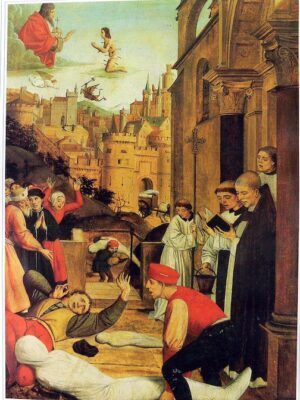
AMERICAN ASSOCIATION FOR THE ADVANCEMENT OF SCIENCE (AAAS)—High-resolution paleoclimate reconstructions from southern Italy, dating to between around 200 BCE and 600 CE, provide a clearer picture of how climate and disease intersected in ancient Rome. Reconstructions showed that temperature and precipitation became increasingly unstable after ~130 CE, with several cold periods tied to historic pandemic outbreaks such as the Justinian Plague. Paleoclimate proxies can offer insights into how past climate change may have influenced human societies, such as when warm or cool intervals coincided with periods of social development or pandemics. The Roman Warm Period – identified from paleoclimate proxies as an era of unusual warmth between roughly 200 BCE and 150 CE – has been associated with a time of prosperity for the Roman Empire. Alternatively, the onset of the Late Antique Little Ice Age around 540 CE, coinciding with the Justinian Plague, is thought to have played a key role in the empire’s decline. Sparse proxy records have made it difficult to characterize these dynamics in detail. Here, Zonneveld et al.* studied temperature and precipitation records at ~3-year resolution between 200 BCE to 600 CE, using proxy data from marine sediments found in the Gulf of Taranto. They observed stronger climate variability beginning after ~130 CE, marking the apparent end of the Roman Warm Period. Comparing these reconstructions with existing records of infectious disease outbreaks in the heart of Rome, they found pulses of ever cooler and drier conditions coinciding with three major pandemics: the Antonine Plague (~165 to 180 CE), the Plague of Cyprian (~251 to 266 CE), and the Justinian Plague, the first wave of the First Plague Pandemic, which began around 540 CE. An extreme temperature drop – about 3°C cooler than the warmest intervals of the Roman Warm Period – occurred between around 537-590 CE, Zonneveld et al. found, which may have amplified the devastation of the Justinian Plague when it emerged in the region.
_____________________________

St Sebastian pleading for the life of a gravedigger afflicted with plague during the 7th-century Plague of Pavia. Painting at the Walters Art Museum, Public Domain, Wikimedia Commons
_____________________________
Article Sources: AAAS news release
*Climate Change, Society, and Pandemic Disease in Roman Italy between 200 BCE and 600 CE, Science Advances, 26-Jan-2024. www.science.org/doi/10.1126/sciadv.adk1033
_____________________________
Advertisement

See the incredible archaeology, architecture, and art of northern Spain. A unique tour with special expert guides and lecturers through the collaboration of Popular Archaeology Magazine and Stone & Compass Tours. Not to be missed. Read More About It: https://popular-archaeology.com/article/northern-spains-triple-a-archaeology-architecture-and-art/.
_____________________________




